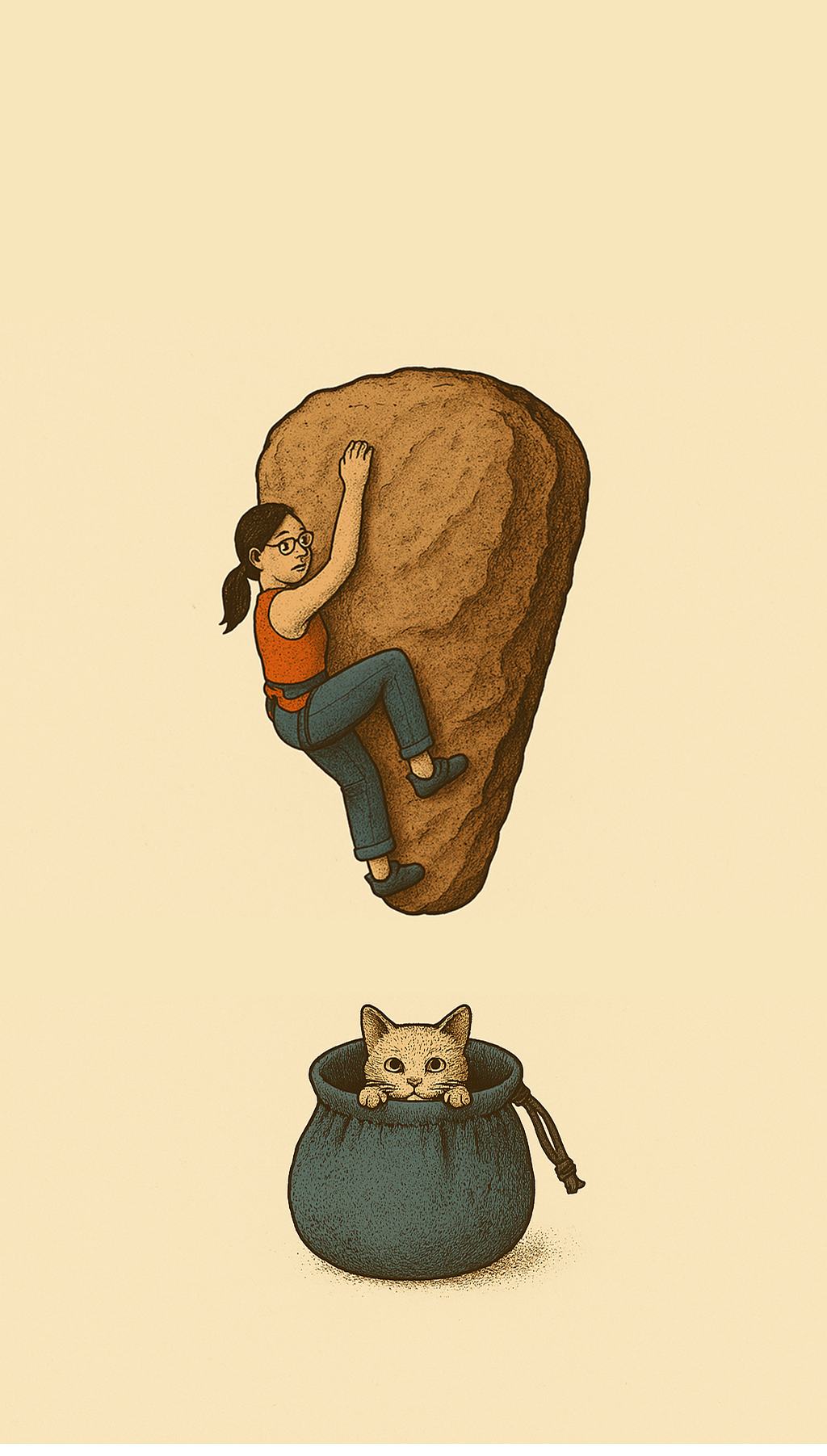“CaliSPANics”: Bodyweight Play to Build “Peripersonal Awareness”
Intro
Most of us know our wingspan number (say, 150 cm) but rarely feel it in our body. We treat it like a trivia fact—"Yeah, that’s my ape index"—without embodying it as a functional reference for movement.
This drill turns that number into a living, sensory experience you can carry onto the wall. Think of it as calisthenics, but with span awareness baked in—not to rack up reps or time under tension, but to play with positions that match your span using every part of your body.
Context: Why Span Matters in Climbing
Your wingspan is a natural ruler you carry around for route-reading, reaching, and deciding if moves are even possible. But for most climbers, especially under stress, there’s a disconnect between knowing the number and feeling what it really means.
On the wall, that often shows up as:
Overcommitting to desperate lunges
Under-reaching when a static move would do
Burning out fingers and arms trying to “make it work”
Missing more efficient beta that uses body position or rotation
If you don’t train your nervous system to feel your reach across many joints and positions—not just standing arms-wide—it’s hard to apply that sense dynamically.
The Drill: Span-Based Calisthenics (CaliSPANics)
Purpose:
To embody your wingspan across varied body positions and joints, building an intuitive, felt sense of what that distance really is—even when you’re not using your arms.
Setup:
Know your measured wingspan (e.g., 150 cm).
Mark this distance on the ground with chalk, tape, or found objects (stones, sticks, shoes).
Alternatively, find real-world spans to use: the width of a hallway, a rug, your bed—any landmark whose size you know.
Execution:
Perform slow, mindful bodyweight movements that use this span as a reference.
Ideas include:
Planks or side planks with feet and hands placed to match your span.
Deep lunges where the markers define your foot separation.
Supine or prone stretches where fingertips or toes reach to the marks.
Crawling variations that move from span to half-span and back.
Rotational drills (standing twists, lying rotations) that pass through span-based endpoints.
Use other limbs! Don’t just measure hands apart—try feet, knees, elbows, shoulders, hips.
Focus on slow, proprioceptive movement, sensing weight shifts, balance changes, and joint engagement.
Optional freestyle:
Take the drill outside and find living landmarks: fence posts, tiles, planks, pool edges, benches.
Use them to measure and play, making span awareness part of daily movement, not just training sessions.
Climbing Benefits: Why Span Awareness Changes the Game
In climbing, your wingspan isn’t just a static number—it’s a living reference for planning movement, estimating distance, and making micro-decisions on the wall. But if your brain doesn’t feel that number in the body, you’ll consistently overreach, under-reach, or misfire under pressure.
Practicing span-awareness drills on the ground does three key things:
1. Refines Motor Planning in Peripersonal Space
Your brain's peripersonal space system maps the area within reach of your limbs—this system is essential for grabbing holds, placing feet, and deciding whether a move is possible.
By using your actual span as a reference in ground-based movements, you strengthen the sensorimotor calibration between intention and execution.
Over time, you build a more trustworthy sense of scale—which translates to smoother, more accurate movement on the wall.
2. Improves Dynamic Coordination and Anticipation
On dynamic moves—like deadpoints, crosses, and paddle moves—your nervous system must predict how far to go before you leave the ground.
Span-based drills give your body a felt sense of range, helping with:
Takeoff positioning
Midair control
Landing absorption
Fall mitigation
Especially for climbers with shorter limbs or unique body proportions, this can improve beta selection and movement efficiency.
3. Expands the Role of Non-Hand Body Parts
The homunculus model in neuroscience shows how the brain gives disproportionate space to the hands and face.
Climbers often default to pulling with the hands under stress, even when better options exist.
By mapping span using feet, hips, shoulders, and torso—not just hands—you retrain your brain to include more of your body in movement planning. This supports whole-body sequencing, vital for slabs, volumes, and compression climbing.
4. Strengthens Proprioceptive Safety and Confidence
If you know where you are in space at full span, half-span, or off-balance, you’re less likely to panic or freeze on reachy moves.
This reduces cognitive load at the crux and opens up creative, calm problem-solving on the wall.
Climbers who internalize their span tend to:
Grab holds more confidently
Commit to beta without second-guessing
Fall more safely
Stay relaxed at the edge of their range
Wrap-up
CaliSPANics isn’t about performing or ticking sets. It’s about building the felt sense of your span—throughout your entire body, in every direction.
By making this a form of creative calisthenics, you turn a simple measurement into embodied intuition that will change how you move, plan, and trust yourself on the wall.
